







Have you heard of Albania? If you have or haven’t, let me tell you a quick story: when I was a teenager traveling in Greece, I took a day trip from the island of Corfu to Albania. This was one of the best decisions I made. I remember the blue water on the Adriatic Sea, the smell of the beaches and the kindness of the people.
The one word I would use to describe Albania is stunning.
Here are some key facts about Albania:
| Key Facts About Albania | Details |
| Population | 2,774,442 |
| Official Language | Albanian |
| Capital | Tirana |
| Currency | Lek |
| Bordering Countries | Montenegro, Kosovo, North Macedonia, Greece |
| Area | 11,100 sq mi (28,748 sq km) |
Read on to learn more fun facts about Albania!
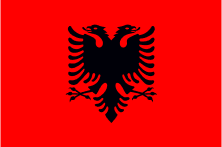
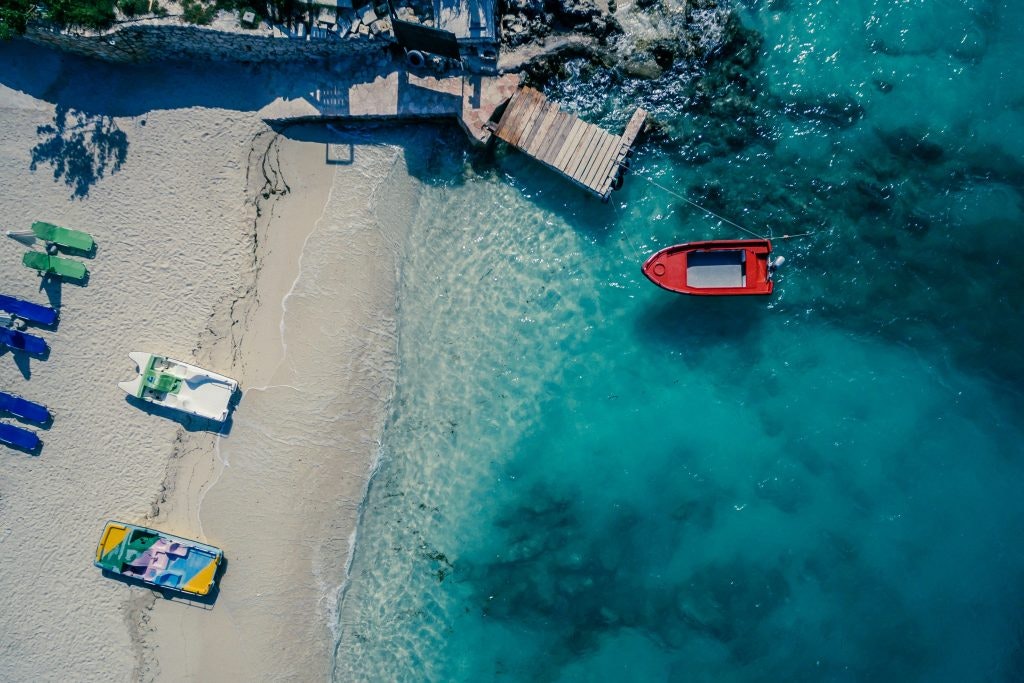
A boat floating on the waters in Albania.
The Albanian language occupies its own branch on the Indo-European language family tree and is not close to any other modern languages. Though its exact origins are not known, Albanian is believed to be a developed form of the Illyrian language, which was spoken by the Illyrians, people who occupied the western Balkan peninsula.
The official language of Albanian is considered to be a very difficult language to learn due to its lack of relation to other languages. The Albanian language is spoken by around 7.5 million people worldwide.
Find out how long it takes for a high school student to learn a new language.
Albania has a very unique way of using scarecrows! These scarecrows can take numerous forms, from mutilated toys to devil-like statues or figures that we would more commonly recognize as scarecrows.
Called dordolecs, these features are placed at building sites, rather than in the fields. They’re not designed to scare crows away, either. Albanians believe that these dordolecs, placed while a property is being constructed, will keep the jealousy of neighbors at bay and function as a good luck charm.
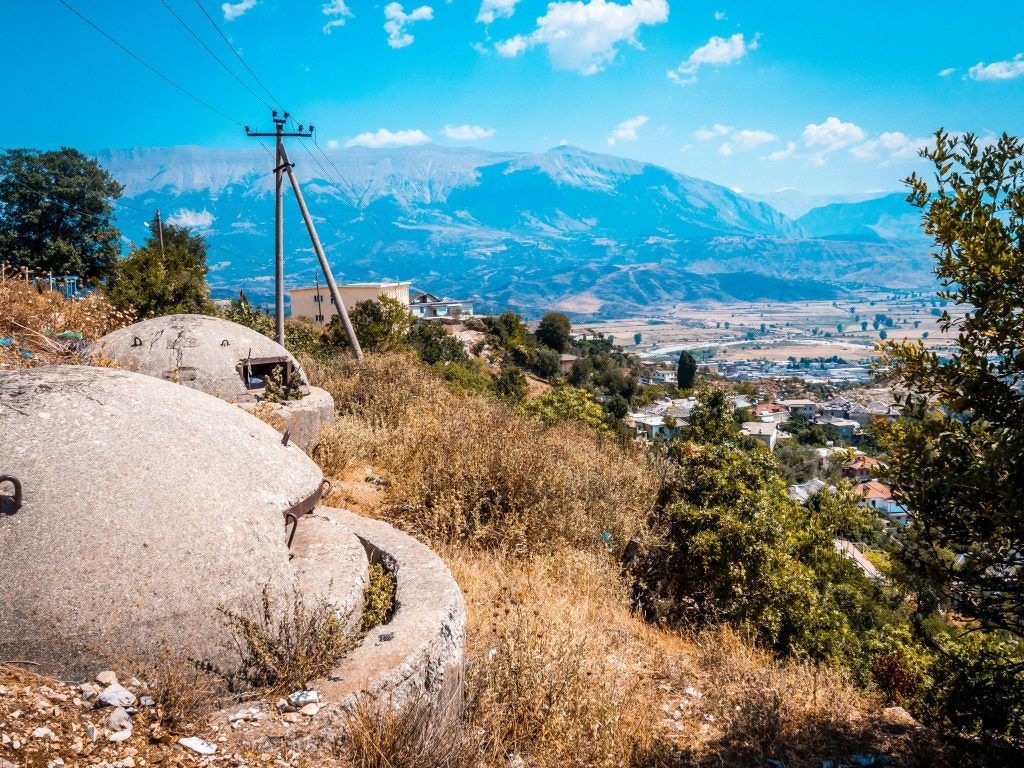
Concrete bunkers overlook the landscape of Gjirokaster, Albania. Photo curtesy of Abenteuer Albanien.
Albania has tens of thousands of bunkers throughout the country. The bunkers were initially constructed during the rule of dictator Enver Hoxha to offer shelter in the event of an invasion. These concrete structures were never used as intended but still feature prominently across the nation, some of which have been transformed into unique art galleries, hip hostels, and trendy restaurants.
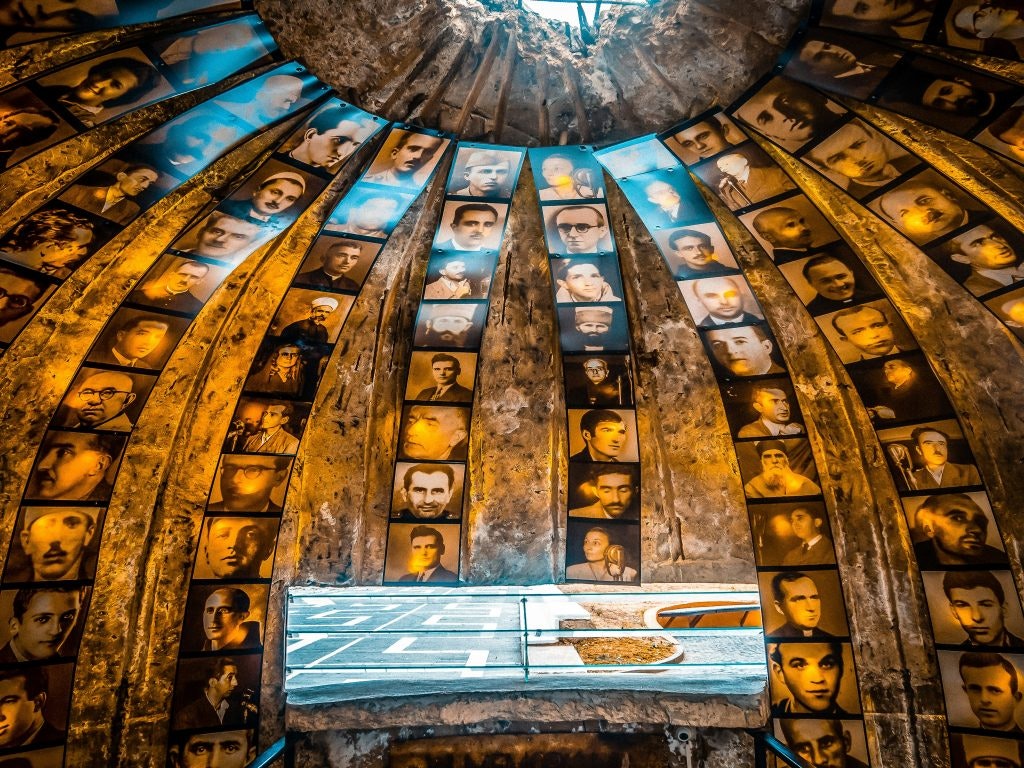
Photos on display at BUNK’ART, Tirana, Albania. Photo curtesy of Abenteuer Albanien.
Albania has many historical treasures, thanks to its location and ancient history.
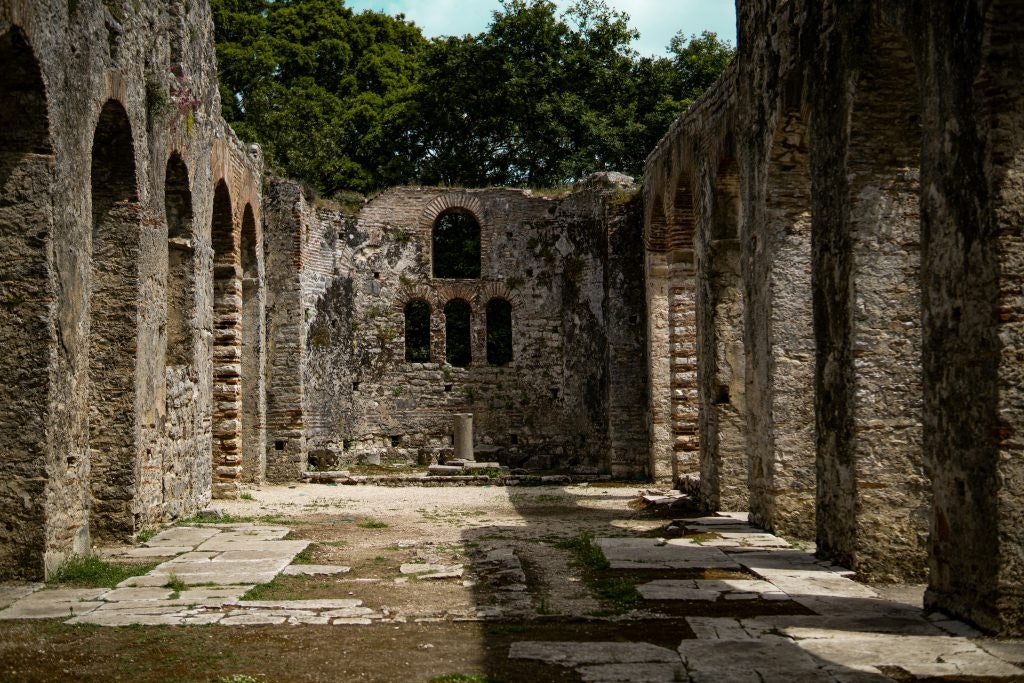
Ruins in the UNESCO heritage site of Butrint, Albania.
The common form of indicating ‘yes’ or ‘no’ works in the completely opposite way in Albania and can cause some significant misunderstandings for foreign visitors. Albanians shake their heads when they want to say yes and nod their heads when they want to say no. If you’re planning a trip to Albania, it would be a good idea to keep this in mind!
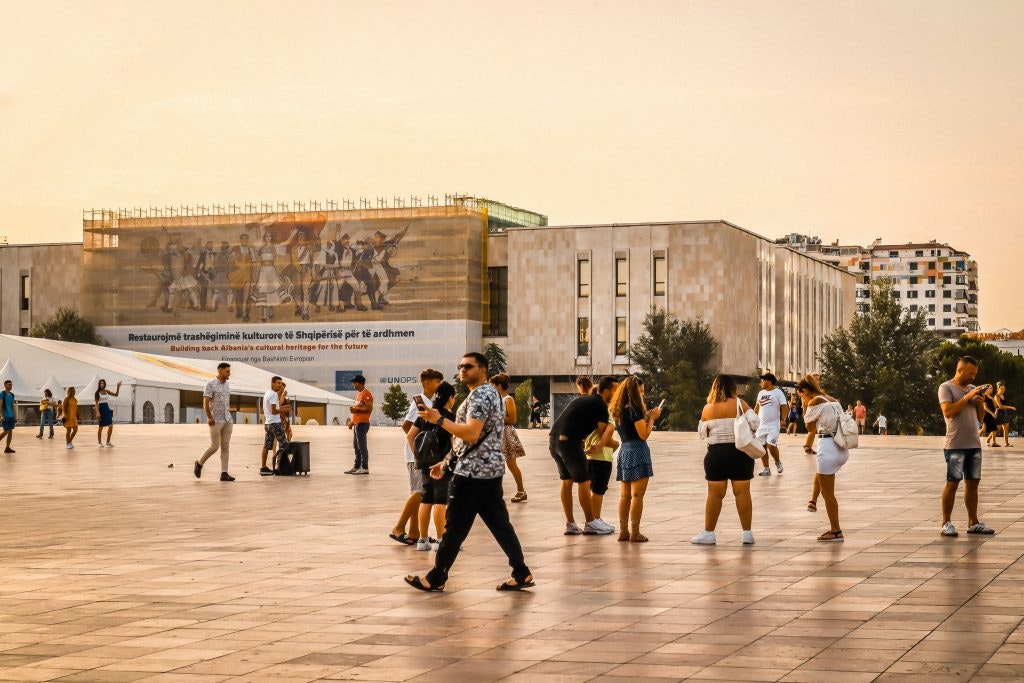
People go for a walk in Tirana, Albania. Photo curtesy of Abenteuer Albanien.
Another possibly confusing cultural norm in Albania is for hair stylists to slap you on the back of the neck after you’ve had a haircut. Stylists will often say “me shëndet” as they do it. This translates to “with health” and is a good thing!
Learn more about greetings in different languages.
One of Albania’s pastimes is xhiro, literally “walk.” Though this seems like nothing unique, it is part of the culture to go for a walk in the evenings. This offers people the opportunity to catch up with their friends, family and neighbors, and enjoy the slightly cooler evening weather.
Owing to the Communist regime led by dictator Enver Hoxha, religion was banned in 1967, and Hoxha declared Albania to be the first atheist country in the world. As part of this ban, the military seized religious buildings, destroying them or turning them into businesses.
Fortunately, this ban did not last forever. Today, Albania is known for its religious tolerance, even receiving praise from Pope Francis during his visit to the country in 2014.
King Zog I ruled Albania stands out as the only Albanian king and only European king who adhered to the Muslim faith. His reign was distinctive in other ways as well; he first served as Prime Minister and then as President before declaring Albania a kingdom and crowning himself King. Zog I was not only the first and only king of Albania to follow Islam, but was also the last king of Albania, leading the country from 1928 until 1939. His reign ended when Italy invaded Albania, forcing him into exile.
Almost 97% of Albania’s energy is produced by hydropower plants, making this country incredibly eco-friendly.
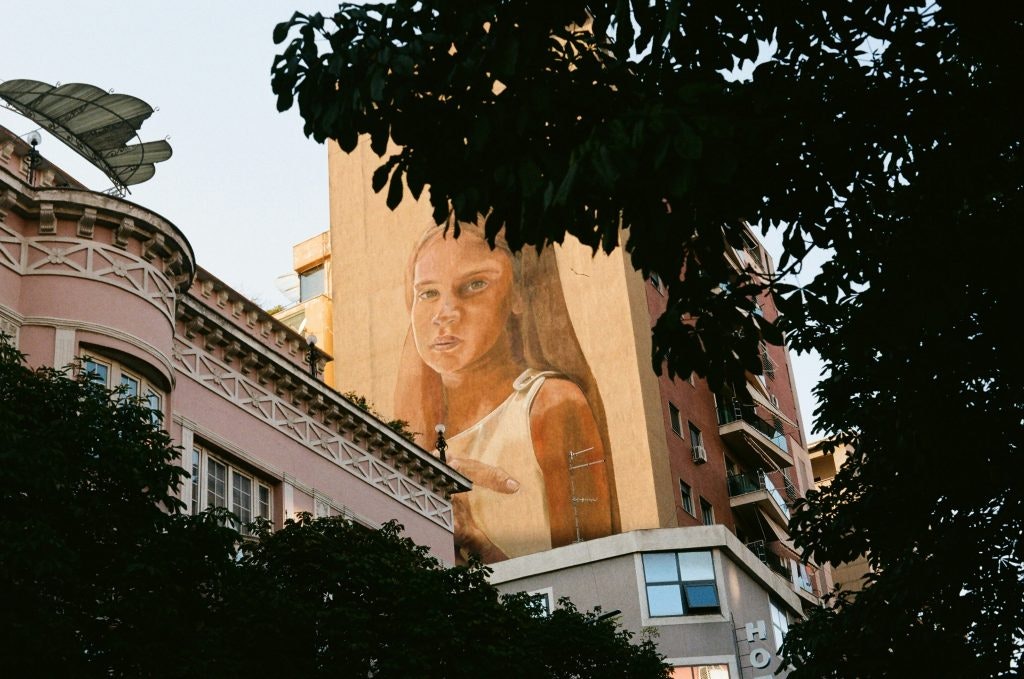
A portrait of a girl on a wall in Tirana, Albania.
Tirana, the capital of Albania, is renowned for its vibrant and colorful character. Established as the capital in 1920, Tirana was influenced by Italian architects during the reign of King Zog I. In the early 2000s, Tirana underwent a dramatic transformation under the leadership of artist turned mayor, Edi Rama. Rama’s vision brought bright, bold colors and abstract shapes to the city’s facades, turning many buildings into art galleries.
Adding to its cultural vibrancy, Tirana launched the Tirana International Film Festival (TIFF) in 2003, marking Albania’s first international film festival. TIFF has become a prestigious event where the winner of the “Golden Owl” award for Best Feature Film is celebrated and becomes eligible for the Academy Awards. This festival further enhances the city’s reputation as a hub of creativity and cultural expression.
Until the 1990s, cars in Albania were a luxury reserved exclusively for the elite. Under communist rule, the government prohibited private car ownership for the general population, allowing only the ruling elite to possess vehicles. By the end of the communist era, Albania had a population of approximately 3 million people, yet there were only about 5,000 cars in the entire country. The impact persists today as Albanians love fireflies more than cars; Albania has the second lowest rate of car ownership in Europe.
The two headed Albanian eagle as symbol of Albania first appeared in 1190 on a stone carving. Today, it is prominently featured on the Albanian flag, which is among the oldest national flags still in use.
The eagle was first officially displayed on the flag in 1443 by Albania’s national hero, Skanderbeg, who led a successful rebellion against the Ottoman Turks during the final days of the Byzantine Empire. This historical image symbolizes Albania’s spirit and serves as a reminder of the fight against Ottoman rule.
Despite Albania’s attractive features, many Albanians live abroad. Estimates of the Albanian diaspora range from 1.7 million to as high as 8.5 million. If the higher estimates are accurate, this means more Albanians live outside their home country than within it, as Albania’s population is just 2.8 million.
Among the notable figures in the Albanian diaspora is Mother Teresa. Although she spent much of her life in India, she was of Albanian descent and is celebrated in Albania. Her legacy is honored with statues throughout the country and with Mother Teresa Square in the capital city of Tirana.
Yes, Albania is generally considered safe for travelers. The country has a low crime rate, and locals are known for their hospitality. However, like in any destination, it’s advisable to take standard precautions, such as being aware of your surroundings and avoiding poorly lit areas at night.
Albania is known for its coastline along the Ionian and Adriatic Seas. It’s also famous for its history, which includes Roman, Byzantine and Ottoman influences, as well as its unique cultural traditions like besa (an Albanian code of honor).
For those who like going to the beach, May to September has great weather along the Albanian Riviera. In the case that you prefer cooler temperatures and outdoor activities, spring and autumn are ideal. Winter is great for exploring cities and historical sites with fewer people.